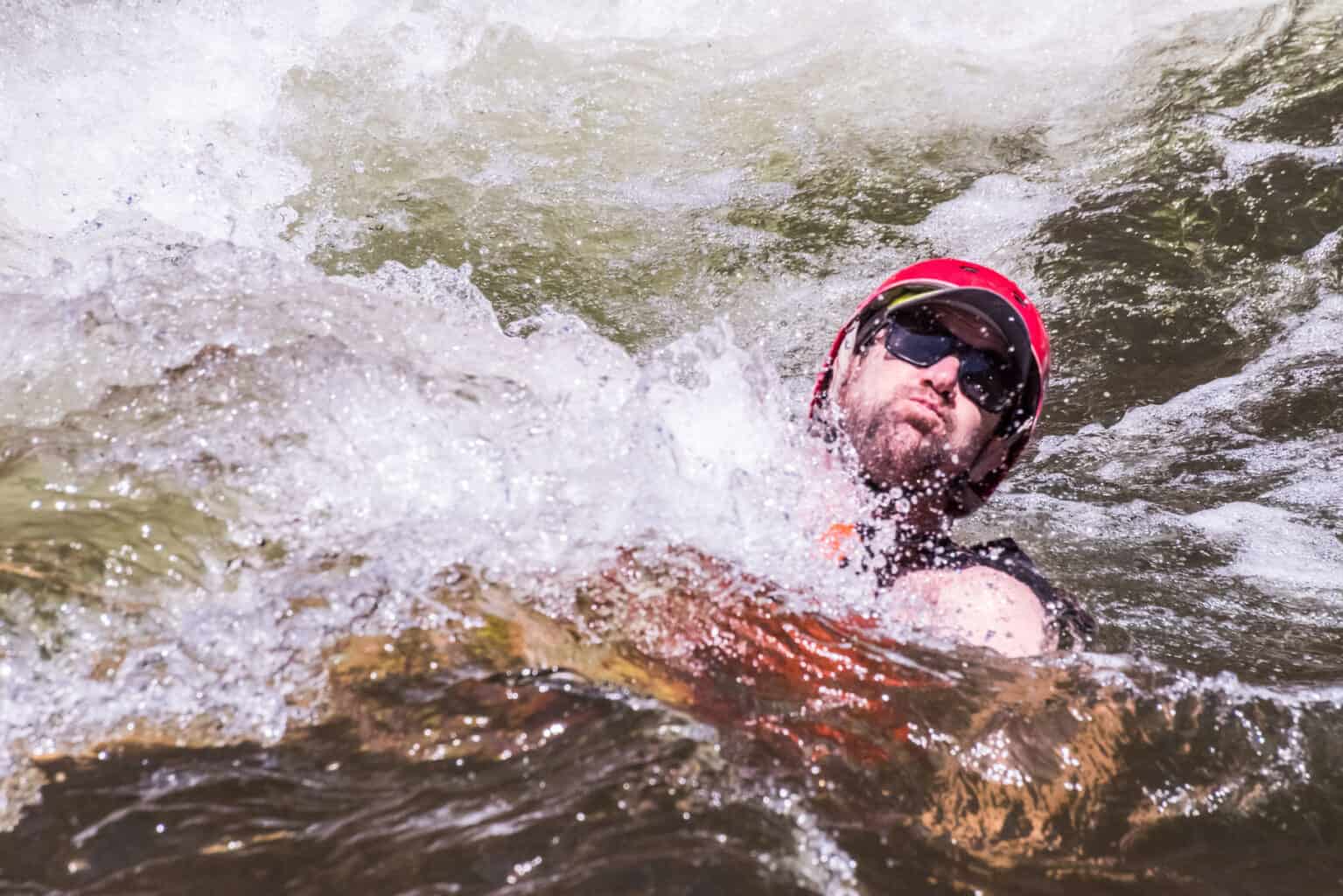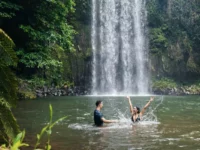Nearby swim-worthy rivers that are perfect for those seeking aquatic adventure! Whether you’re a seasoned swimmer or simply looking to cool off during the summer months, we’ve got you covered. In this article, we’ll dive into the top rivers in your area that offer pristine waters and a refreshing swimming experience. So grab your swimsuit, towels, and sunscreen as we explore these hidden gems that will surely make your outdoor escapades unforgettable.
1. Nearby Swim-Worthy Rivers
Discover the allure of nearby swim-worthy rivers, where you can immerse yourself in the beauty of natural aquatic environments. Unlike crowded swimming pools or artificial water parks, these rivers offer a serene and refreshing experience. Whether you’re a nature lover, an avid swimmer, or simply seeking a new adventure, exploring nearby rivers is an excellent choice.
Swimming in rivers provides a unique opportunity to connect with nature and experience the therapeutic benefits of being surrounded by flowing water. Not only can you enjoy a leisurely swim, but you can also take in the picturesque surroundings, listen to the soothing sounds of rippling currents, and even spot fascinating wildlife along the riverbanks.
Why Choose Nearby Swim-Worthy Rivers?
Swim-worthy rivers have several advantages over other swimming options. Firstly, they offer a refreshing alternative to crowded public pools, where you can enjoy more privacy and solitude. Additionally, the natural beauty of rivers creates a tranquil atmosphere that is difficult to replicate in man-made swimming facilities.
Moreover, swimming in rivers allows you to experience the thrill of exploring various natural features. From swimming against gentle currents to discovering hidden swimming holes and waterfalls, these rivers offer a range of exciting possibilities. Whether you prefer calm and shallow sections for a relaxing dip or adventurous rapids for a thrilling swim, nearby rivers have something to offer everyone.
2. Factors to Consider Before Swimming
Before embarking on your river swimming adventure, it’s important to consider certain factors to ensure a safe and enjoyable experience. By taking these factors into account, you can make informed decisions and choose the most suitable swim-worthy river for your needs.
Water Quality
Water quality is paramount when selecting a river for swimming. Research the water quality of the rivers in your area, paying attention to any advisories or warnings issued by local authorities. It’s advisable to choose rivers with clean and well-maintained water to minimize the risk of waterborne illnesses.
Safety Precautions
While rivers can be enticing, it’s essential to prioritize safety. Assess the safety measures in place at the chosen river, such as lifeguards, signage, and safety equipment availability. Familiarize yourself with potential hazards like strong currents, submerged rocks, or sudden depth changes, and take appropriate precautions.
Weather Conditions
Weather conditions impact river swimming experiences. Check the weather forecast before heading out, paying attention to factors like temperature, wind speed, and the likelihood of storms. Avoid swimming during inclement weather, as it can lead to dangerous situations like flash floods or lightning strikes.
Accessibility
Consider the accessibility of the chosen river, especially if you have specific requirements or limitations. Evaluate factors such as parking availability, ease of entry into the water, and nearby amenities like restrooms or picnic areas. Accessibility ensures convenience and enhances your overall experience.
Local Regulations
Before diving into a nearby river, familiarize yourself with any local regulations or permits required. Some rivers may have specific rules regarding swimming, such as designated swimming areas or restricted access during certain times. Respecting these regulations helps preserve the environment and ensures the safety of all swimmers.
3. Best Practices for River Swimming
To make the most of your river swimming experience, it’s important to follow best practices that ensure your safety and maximize enjoyment. By adhering to these guidelines, you can have a memorable and worry-free time in the water.
Assess Currents and Depth
Before entering the river, take a moment to assess the currents and depth. Look for any signs of strong currents or undertows that could pose a risk. Additionally, determine the depth of the water to ensure it’s suitable for swimming and avoid unexpectedly shallow areas.
Swim with a Buddy
Whenever possible, swim with a buddy or in the presence of others. Having someone else with you provides an extra layer of safety and support in case of an emergency. It also enhances the overall experience by allowing you to share the joy of river swimming with a companion.
Stay Hydrated
Swimming can be physically demanding, even in a river. Remember to stay hydrated by bringing along water or sports drinks, especially on hot days. Drink regularly to replenish fluids and prevent dehydration, which can lead to fatigue and other health issues.
Protect Yourself from the Sun
Spending time in the water doesn’t mean you’re safe from the sun’s rays. Apply waterproof sunscreen before entering the river and reapply as needed. Wearing a wide-brimmed hat and UV-protective sunglasses can further shield you from harmful sun exposure.
Be Mindful of Wildlife
Rivers are often home to various forms of wildlife, so it’s important to be respectful and mindful of their presence. Avoid disturbing or approaching animals, as they may become defensive. Admire wildlife from a safe distance and refrain from feeding or interacting with them.
Leave No Trace
Preserve the natural beauty of the river and its surroundings by practicing Leave No Trace principles. Carry out any trash or waste you generate, and avoid introducing pollutants into the water. By leaving the river as you found it, you contribute to its long-term sustainability and conservation.
4. Top Swim-Worthy Rivers in [Your Area]
[Your Area] is blessed with a variety of swim-worthy rivers that offer exceptional experiences for water enthusiasts. Here are some of the top rivers in the region that are perfect for swimming:
River A
River A is renowned for its crystal-clear waters and picturesque scenery. With its calm currents and sandy riverbanks, it provides a tranquil and inviting environment for swimmers of all ages. The river is easily accessible and offers ample opportunities for picnicking and sunbathing.
River B
For those seeking a more adventurous swim, River B is the perfect choice. With its exhilarating rapids and deep swimming holes, it caters to adrenaline junkies looking for a thrilling experience. However, it’s important to exercise caution and follow safety guidelines in this slightly more challenging river.
River C
If you prefer a family-friendly swimming spot, River C is an excellent option. This river boasts shallow sections that are ideal for young children to splash around safely. It also features gentle currents and a sandy bottom, making it a popular choice for families looking for a fun day out.
River D
Nestled amidst lush greenery, River D offers a serene and secluded swimming experience. With its calm waters and beautiful natural surroundings, it’s a haven for those seeking a peaceful escape. Take a leisurely swim, explore the riverbanks, or simply relax and enjoy the tranquility.
These are just a few examples of the swim-worthy rivers in [Your Area]. Each river has its own unique charm and offers a different experience, catering to various preferences and skill levels. Make sure to check local resources and gather more information about these rivers to plan your next swimming adventure.
5. Safety Measures and Precautions
Ensuring safety is paramount when it comes to river swimming. By following these essential safety measures and precautions, you can minimize risks and enjoy a worry-free swimming experience:
Learn to Swim
Before venturing into any body of water, it’s crucial to learn how to swim confidently. Take swimming lessons or practice regularly to improve your swimming skills and build stamina. Knowing how to swim efficiently will greatly enhance your safety and enjoyment in the river.
Wear a Life Jacket
Regardless of your swimming ability, wearing a properly fitted life jacket is highly recommended. Life jackets provide buoyancy and can be a lifesaver in case of fatigue, unexpected currents, or accidents. Ensure that the life jacket is approved by relevant safety standards.
Supervise Children
If you’re swimming with children, always provide close supervision. Children should be within arm’s reach and under constant watch, especially in rivers with varying currents. Educate them about water safety and potential hazards to promote a safe swimming environment.
Stay Vigilant of Currents
Pay attention to the river’s currents and any changes in water flow. Even seemingly calm rivers can have strong undercurrents that may pose risks. Avoid swimming near dams, weirs, or areas with turbulent water, as they can have powerful and unpredictable currents.
Do Not Dive
Never dive into a river unless you are absolutely certain of its depth and free from any hidden obstacles. Shallow water or submerged rocks can cause serious injuries. Always enter the water feet-first while carefully assessing the conditions beforehand.
Be Aware of Weather Conditions
Prioritize your safety by staying informed about the weather forecast. Avoid swimming during storms, as lightning can be a severe hazard. If you notice sudden changes in weather patterns or darkening skies, it’s best to exit the water and seek shelter immediately.
Know Emergency Procedures
Familiarize yourself with emergency procedures and the location of the nearest emergency services. It’s important to be prepared for any unexpected situations, such as assisting others in need or calling for help. Carry a charged mobile phone for emergencies.
By adhering to these safety measures and precautions, you can enjoy a safe and fulfilling river swimming experience. Remember, your well-being and that of others should always be the top priority when engaging in any water activities.
6. Health Benefits of River Swimming
Swimming in rivers not only offers a refreshing and enjoyable experience, but it also provides numerous health benefits for both your body and mind. Dive into the advantages of river swimming and discover how it can contribute to your overall well-being:
Cardiovascular Fitness
River swimming is an excellent form of cardiovascular exercise. The resistance of the water helps strengthen your heart and lungs while improving circulation. Regular swimming sessions in the river can enhance your cardiovascular fitness, leading to increased stamina and endurance.
Muscle Strength and Toning
The act of swimming engages various muscle groups in your body. As you navigate through the water, you work your arms, shoulders, back, core, and leg muscles. Over time, river swimming can help tone and strengthen these muscles, promoting better overall muscle health.
Joint-Friendly Exercise
Unlike high-impact activities like running, river swimming is a low-impact exercise that puts minimal strain on your joints. The buoyancy of the water supports your body, reducing the risk of joint injuries. It’s an ideal choice for individuals with joint issues or those looking for a gentler workout.
Improved Flexibility
The resistance and fluidity of water during river swimming promote improved flexibility. The range of motion required to perform different swimming strokes helps increase joint flexibility and muscle elasticity. Regular swimming can contribute to better overall flexibility and range of motion in your body.
Mental Well-Being
Swimming in rivers has a calming effect on the mind, reducing stress and promoting relaxation. Being surrounded by the beauty of nature and the soothing sounds of flowing water can have a positive impact on your mental well-being. River swimming provides an opportunity to disconnect from daily stressors and find inner peace.
Increased Energy Levels
Engaging in regular physical activity like river swimming boosts your energy levels. The combination of cardiovascular exercise, fresh air, and natural surroundings can invigorate both your body and mind. After a refreshing swim in the river, you’ll often find yourself feeling more energized and rejuvenated.
By incorporating river swimming into your routine, you can reap these health benefits while enjoying the beauty of natural surroundings. It’s a delightful way to stay active, improve your fitness, and promote a sense of well-being.
7. Environmental Considerations
When enjoying the pleasures of river swimming, it’s important to be mindful of the environment and take steps to preserve the natural ecosystem. By following these environmental considerations, you can help protect the river and its surrounding ecosystem:
Avoid Pollution
Do your part in keeping the river clean by refraining from littering or discarding any waste into the water. Carry out any trash you generate and dispose of it properly in designated bins. Avoid using soaps, detergents, or other chemicals that can harm aquatic life or disrupt the river’s delicate balance.
Respect Wildlife
Observe wildlife from a distance and avoid disturbing their natural habitats. Refrain from feeding or approaching animals, as it can disrupt their behavior and lead to dependency on human interaction. Appreciate the river’s diverse wildlife from afar and help maintain their natural environment.
Stay on Designated Paths
When accessing the river, stick to designated paths and avoid trampling on sensitive vegetation or disturbing fragile ecosystems. These paths are designed to minimize human impact and preserve the natural surroundings. Respecting these paths helps maintain the integrity of the river ecosystem.
Leave Natural Features Untouched
Do not alter or remove natural features, such as rocks or plants, as they play an important role in the river ecosystem. These features provide habitats for various organisms and contribute to the overall health of the river. Leave them untouched for others to appreciate and enjoy.
Learn and Educate Others
Take the time to learn about the local flora and fauna, as well as any conservation efforts related to the river. By educating yourself, you can better understand the significance of the river and its ecological importance. Share your knowledge with others to raise awareness and encourage responsible behavior.
Participate in Conservation Efforts
Consider participating in community-led river conservation efforts. These initiatives may include river clean-up events, habitat restoration programs, or educational campaigns. Contributing to conservation efforts helps protect the river and ensures its long-term sustainability.
By being environmentally conscious and adopting responsible behaviors, you can enjoy the beauty of the river while preserving its ecological balance. Let’s work together to ensure that future generations can continue to experience the wonders of river swimming and the natural world.
8. River Safety Equipment and Gear
To ensure a safe and enjoyable river swimming experience, it’s important to have the right safety equipment and gear. Here are some essential items to consider before diving into the water:
Life Jackets
A properly fitted and approved life jacket is a must-have for river swimming, especially for those who are not confident swimmers. Choose a life jacket that provides buoyancy and allows for unrestricted movement. Ensure that it fits snugly and is in good condition.
Water Shoes or Sandals
Wearing water shoes or sandals is highly recommended to protect your feet from sharp rocks, shells, or other potential hazards in the river. Opt for shoes with good traction to prevent slipping on wet surfaces. They also provide insulation against hot sand or rough riverbeds.
Sunscreen
Apply a waterproof sunscreen with a high SPF rating to protect your skin from harmful UV rays while swimming in the river. Choose a sunscreen that is safe for aquatic life to minimize the environmental impact when it washes off in the water.
Swim Caps
Swim caps can help keep your hair out of your face and reduce drag while swimming. They also offer some protection against the sun’s rays and help retain body heat in cooler water temperatures. Choose a cap that fits comfortably and securely.
Waterproof Bag or Dry Bag
A waterproof bag or dry bag is essential for keeping your belongings safe and dry while swimming. These bags are designed to keep water out, ensuring that your valuables, such as phones, wallets, and keys, remain protected. Look for bags with secure closures and adjustable straps.
First Aid Kit
Carrying a basic first aid kit is always a smart idea. Include items such as adhesive bandages, antiseptic wipes, tweezers, and any necessary personal medications. It’s better to be prepared for minor injuries or emergencies that may occur during your river swimming adventure.
Whistle or Signal Device
A whistle or signal device can be useful for attracting attention or signaling for help in case of an emergency. Choose a loud and durable whistle that can be easily heard over the sound of rushing water or other ambient noise.
Having the right safety equipment and gear when swimming in rivers can greatly enhance your safety and peace of mind. Be prepared and ensure that all equipment is in good working condition before heading out to the river.
9. Exploring River Swimming Communities
Many communities have vibrant river swimming cultures, with dedicated groups and organizations that promote and celebrate this enjoyable activity. Here are some ways to explore and engage with river swimming communities in your area:
Local Events and Competitions
Stay up-to-date with local events and competitions centered around river swimming. These events often bring together swimmers of all skill levels and provide opportunities to connect with fellow enthusiasts. Participating or spectating can be a great way to immerse yourself in the river swimming community.
Join River Swimming Clubs
Look for river swimming clubs or organizations in your area and consider becoming a member. These clubs offer a platform to meet like-minded individuals, share experiences, and stay informed about upcoming swimming activities. They may also organize group swims or training sessions.
Volunteer for River Conservation
Participate in volunteer activities focused on river conservation. Many river swimming communities actively engage in efforts to protect and preserve their local rivers. By volunteering, you can contribute to the well-being of the river ecosystem and connect with others who share a passion for river swimming and environmental stewardship.
Online Communities and Forums
Join online communities and forums dedicated to river swimming. These platforms allow you to connect with swimmers from around the world, share tips and experiences, and seek advice. Engaging in these communities can provide valuable insights and foster a sense of belonging within the river swimming community.
Social Media Engagement
Follow social media accounts and hashtags related to river swimming. Platforms like Instagram, Facebook, and Twitter are often used by river swimming communities to share stunning photos, stories, and updates. Engage with posts, ask questions, and interact with fellow swimmers to build connections and stay informed.
Attend Workshops or Training Sessions
Consider attending workshops or training sessions specifically designed for river swimming. These sessions may cover topics such as safety, technique, and river-specific challenges. Learning from experienced swimmers and professionals can enhance your skills and confidence in the water.
Exploring river swimming communities can deepen your appreciation for this recreational activity and connect you with individuals who share your love for the water. Engage with local events, join clubs, volunteer, and connect online to fully immerse yourself in the vibrant river swimming community.
10. Conclusion
In conclusion, nearby swim-worthy rivers offer an incredible opportunity to immerse yourself in nature and enjoy the thrill of outdoor swimming. By considering factors such as water quality, safety precautions, weather conditions, and accessibility, you can choose the perfect river for your swimming adventures.
Remember to follow best practices for river swimming, including assessing currents and depth, swimming with a buddy, staying hydrated, protecting yourself from the sun, being mindful of wildlife, and leaving no trace. These practices ensure both your safety and the preservation of the river ecosystem.
River swimming provides numerous health benefits, such as cardiovascular fitness, muscle strength and toning, joint-friendly exercise, improved flexibility, mental well-being, and increased energy levels. It’s a delightful way to stay active while connecting with the natural world.
As you enjoy your river swimming experiences, keep in mind the environmental considerations discussed earlier. Avoid pollution, respect wildlife, stay on designated paths, leave natural features untouched, learn and educate others, and participate in conservation efforts to ensure the long-term sustainability of the rivers.
Exploring river swimming communities adds another dimension to your experience. Engage with local events, join clubs, volunteer for river conservation, connect online, and attend workshops or training sessions to immerse yourself in the vibrant river swimming community.
So, grab your swimwear, safety gear, and a sense of adventure, and dive into the nearby swim-worthy rivers. Discover the joy of swimming in natural environments, connect with like-minded individuals, and create memories that will last a lifetime. Enjoy the beauty of rivers while respecting their delicate ecosystems, and embrace the many benefits that river swimming brings to your health and well-being.
To conclude, nearby swim-worthy rivers offer a refreshing and exhilarating experience for outdoor enthusiasts. By considering important factors such as water quality, safety precautions, weather conditions, and accessibility, you can choose the perfect river for your swimming adventures. Following best practices, such as assessing currents, swimming with a buddy, and protecting yourself from the sun, ensures a safe and enjoyable experience.
River swimming not only provides physical health benefits like improved cardiovascular fitness and muscle strength, but it also promotes mental well-being and a deeper connection with nature. It’s important to be mindful of the environment by avoiding pollution, respecting wildlife, and participating in conservation efforts.
Exploring river swimming communities allows you to connect with like-minded individuals, engage in local events, and contribute to river conservation. By immersing yourself in the vibrant river swimming community, you can enhance your experience and create lasting memories.
So, take the plunge and discover the wonders of nearby swim-worthy rivers. Embrace the beauty of nature, prioritize your safety, and enjoy the numerous benefits that river swimming has to offer. Dive in and make a splash in these natural aquatic havens!

As a passionate water enthusiast, I’ve spent my life exploring the depths of swimming and sharing my experiences with the world. Stroke Swimming is more than just a blog; it’s a deep dive into the world of swimming. Here, you’ll find a treasure trove of information, tips, and insights to help both beginners and seasoned swimmers enhance their skills, knowledge, and appreciation for this timeless art.





